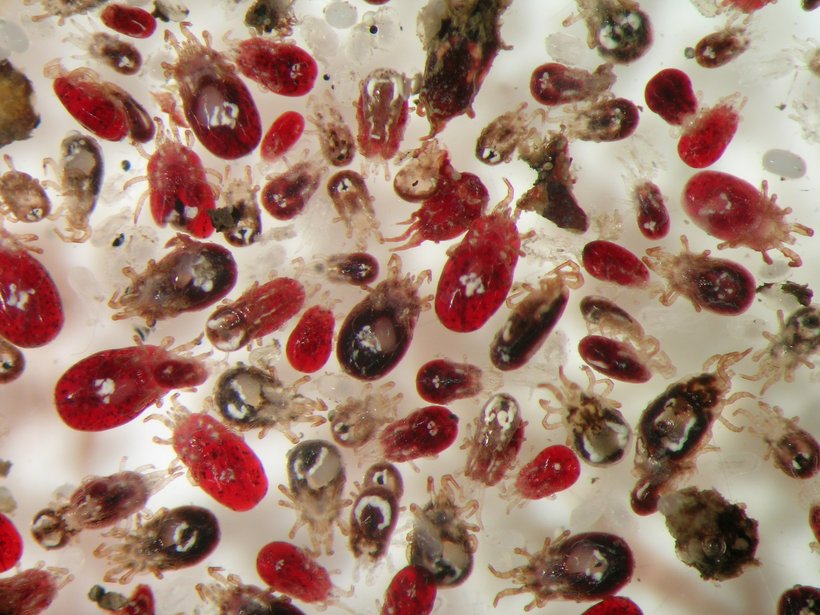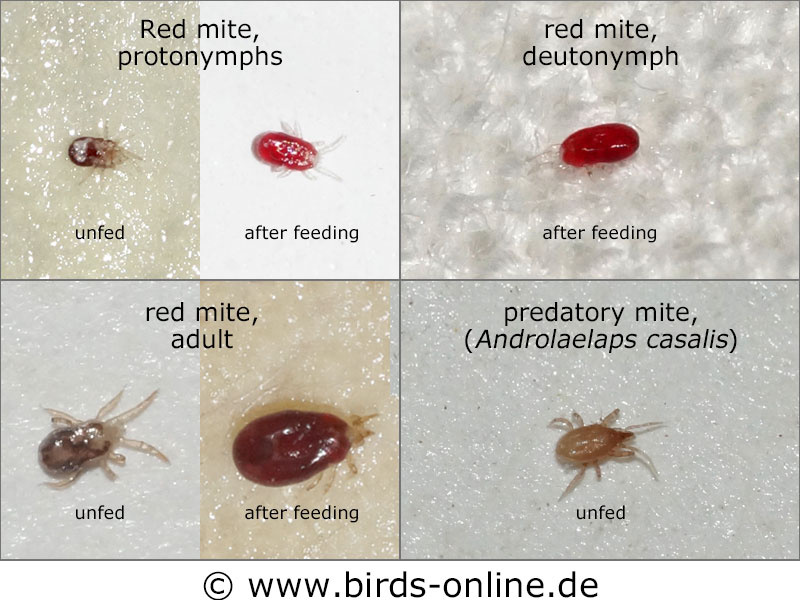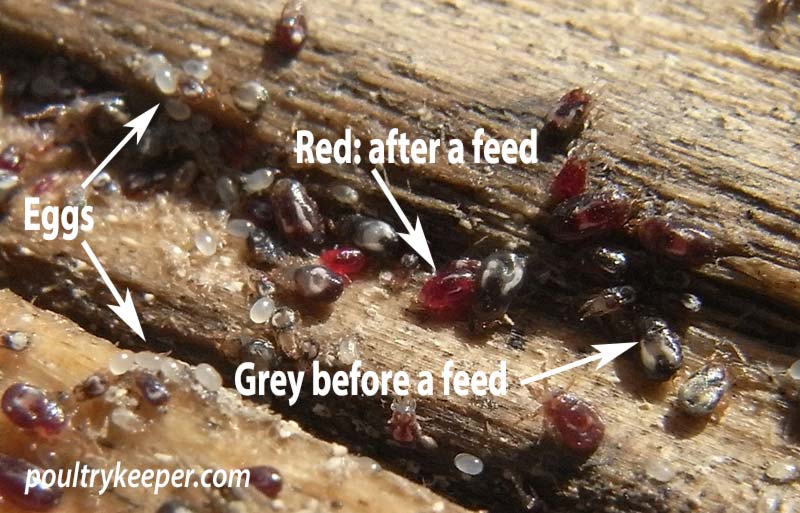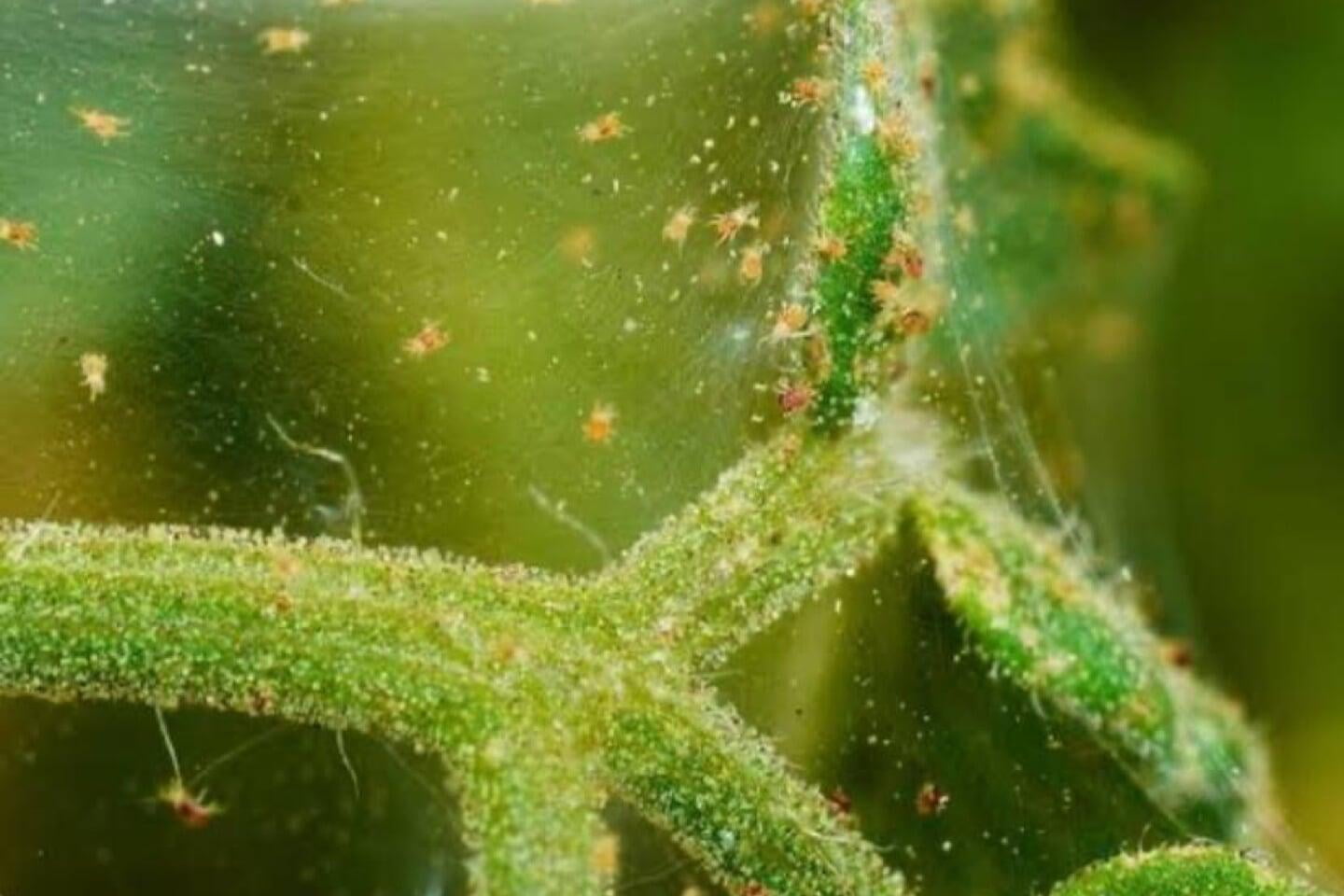Understanding the Red Mite Infestation
Red mite infestations are a common problem affecting poultry and other animals worldwide. These tiny, blood-sucking parasites can cause significant stress, discomfort, and health issues in infested animals. Early detection and identification of red mites are crucial to prevent the infestation from spreading and to develop an effective treatment plan. But what does red mite look like, and how can you identify them? In this comprehensive guide, we will delve into the world of red mites, exploring their appearance, behavior, and habitats, as well as providing practical tips on how to spot them and prevent infestations.
Red mite infestations can have severe consequences for animal health and productivity. Anemia, weight loss, and decreased egg production are just a few of the potential outcomes of a red mite infestation. Moreover, red mites can also transmit diseases and parasites to animals, further exacerbating the problem. Therefore, it is essential to understand the signs and symptoms of a red mite infestation and take prompt action to address the issue.
One of the primary challenges in identifying red mites is their small size. Adult red mites are approximately 1 mm in length, making them difficult to spot with the naked eye. However, there are several signs and symptoms that can indicate the presence of red mites. For example, animals may exhibit excessive scratching, feather pecking, or restlessness, which can be indicative of a red mite infestation. Additionally, the presence of tiny, red or brown spots on the animal’s skin or feathers can also be a sign of red mites.
In the following sections, we will explore the appearance and behavior of red mites in more detail, providing you with the knowledge and skills necessary to identify and address red mite infestations effectively. Whether you are a poultry farmer, a pet owner, or simply someone interested in learning more about these tiny parasites, this guide aims to provide you with a comprehensive understanding of red mites and how to manage them.
What Are Red Mites and How Do They Look?
Red mites, also known as Dermanyssus gallinae, are tiny, eight-legged parasites that feed on the blood of poultry and other animals. They are a common problem in poultry farms and backyard flocks, causing discomfort, stress, and health issues in infested animals. But what does red mite look like? Adult red mites are approximately 1 mm in length, oval in shape, and have a reddish-brown color. They have a distinctive appearance, with a rounded body and long, thin legs.
One of the key characteristics of red mites is their ability to change color depending on their feeding status. Unfed red mites are typically pale yellow or gray, while fed mites are reddish-brown due to the blood they have ingested. This color change can make it challenging to identify red mites, especially for those who are not familiar with their appearance.
In addition to their size, shape, and color, red mites also have a distinctive behavior. They are nocturnal, meaning they are most active at night, and they tend to congregate in large numbers on the skin and feathers of their hosts. Red mites are also known to be highly mobile, able to move quickly and easily from one host to another.
To distinguish red mites from other mites or insects, it’s essential to examine them closely. Red mites have a distinctive pattern of tiny hairs on their body, which can be seen with the aid of a magnifying glass or microscope. They also have a characteristic way of moving, using their long legs to crawl slowly and deliberately across surfaces.
Understanding the appearance and behavior of red mites is crucial for identifying and managing infestations. By knowing what to look for, you can take steps to prevent red mites from becoming a problem in your flock or home. In the next section, we will explore how to spot red mites in your flock or home, including practical tips on where to look and what signs to look for.
How to Spot Red Mites in Your Flock or Home
Inspecting for red mites requires a thorough and systematic approach. To increase the chances of detecting red mites, it’s essential to know where to look and what signs to look for. Red mites can be found in various locations, including poultry coops, nests, roosting bars, and even on the birds themselves.
When inspecting for red mites, start by examining the birds’ skin and feathers, paying particular attention to the vent area, under the wings, and around the neck. Look for tiny, red or brown spots, which can indicate the presence of red mites. Also, check for excessive scratching, feather pecking, or restlessness, which can be indicative of a red mite infestation.
In addition to inspecting the birds, it’s also crucial to examine the environment. Red mites can be found in cracks and crevices, under debris, and in dark, secluded areas. Use a magnifying glass or microscope to inspect these areas thoroughly, looking for tiny, moving dots or eggs.
Another effective way to detect red mites is to use sticky traps or tape to capture them. Place the traps or tape in areas where red mites are likely to be present, such as near roosting bars or in nests. Check the traps or tape regularly for signs of red mites.
When inspecting for red mites, it’s also essential to consider the time of day. Red mites are most active at night, so it’s best to inspect for them during this time. Use a flashlight or lamp to illuminate the area, making it easier to spot the mites.
By following these tips and being thorough in your inspection, you can increase the chances of detecting red mites in your flock or home. Remember, early detection is key to preventing infestations and reducing the risk of disease transmission. In the next section, we will explore the appearance of red mite eggs and nymphs, and provide guidance on how to identify them.
Red Mite Eggs and Nymphs: What to Look For
Red mite eggs and nymphs are an essential part of the red mite life cycle, and identifying them can help you detect infestations early on. Red mite eggs are typically white or translucent, oval in shape, and about 0.1 mm in length. They are often laid in cracks and crevices, under debris, or in dark, secluded areas.
Nymphs, on the other hand, are the immature stages of red mites. They go through several molts before reaching adulthood, and each molt is slightly larger than the previous one. Nymphs are typically smaller than adult red mites, with a more translucent color. They are also more active than adults, often moving quickly and erratically.
To identify red mite eggs and nymphs, look for the following characteristics:
- Eggs: White or translucent, oval in shape, about 0.1 mm in length
- Nymphs: Smaller than adult red mites, more translucent color, active and erratic movement
It’s essential to note that red mite eggs and nymphs can be difficult to distinguish from other mite species or insects. Therefore, it’s crucial to use a magnifying glass or microscope to examine them closely. By understanding the appearance of red mite eggs and nymphs, you can take steps to prevent infestations and reduce the risk of disease transmission.
In the next section, we will discuss the common places to find red mites, including poultry coops, nests, and roosting bars. We will also provide guidance on how to inspect these areas thoroughly to detect red mites.
Common Places to Find Red Mites
Red mites can be found in various locations, including poultry coops, nests, roosting bars, and even on the birds themselves. To increase the chances of detecting red mites, it’s essential to know where to look and how to inspect these areas thoroughly.
Poultry coops are a common place to find red mites, particularly in the cracks and crevices of the walls, floor, and roof. Red mites can also be found in nests, especially if they are not regularly cleaned and disinfected. Roosting bars are another area where red mites can be found, as they tend to congregate on the bars and surrounding areas.
When inspecting these areas, look for signs of red mites, such as tiny, red or brown spots, or eggs and nymphs. Use a magnifying glass or microscope to examine the areas closely, and pay particular attention to any cracks or crevices where red mites may be hiding.
In addition to these areas, red mites can also be found on the birds themselves, particularly under the wings, around the vent area, and on the legs and feet. Inspect the birds regularly, looking for signs of red mites, such as excessive scratching, feather pecking, or restlessness.
Some other common places to find red mites include:
- Feeders and waterers
- Nesting boxes
- Perches and roosting bars
- Cracks and crevices in the coop or run
- Under debris or litter
By knowing where to look and how to inspect these areas thoroughly, you can increase the chances of detecting red mites and preventing infestations.
In the next section, we will discuss how to distinguish red mites from other pests, such as lice, fleas, or ticks, and explain the importance of accurate identification.
How to Distinguish Red Mites from Other Pests
Accurate identification of red mites is crucial to develop an effective treatment plan and prevent re-infestation. However, distinguishing red mites from other pests can be challenging, especially for those who are not familiar with their appearance. In this section, we will provide guidance on how to differentiate red mites from other common pests, such as lice, fleas, and ticks.
Lice are another common pest that can infest poultry and other animals. However, lice are typically larger than red mites and have a more elongated body shape. Lice also tend to congregate on the feathers and skin of their hosts, whereas red mites tend to hide in cracks and crevices.
Fleas are another pest that can be mistaken for red mites. However, fleas are typically larger and more jumping than red mites. Fleas also tend to congregate on the skin and feathers of their hosts, whereas red mites tend to hide in dark, secluded areas.
Ticks are another pest that can be mistaken for red mites. However, ticks are typically larger and more rounded than red mites. Ticks also tend to congregate on the skin and feathers of their hosts, whereas red mites tend to hide in cracks and crevices.
To distinguish red mites from other pests, look for the following characteristics:
- Size: Red mites are typically smaller than lice, fleas, and ticks.
- Body shape: Red mites have a more rounded body shape than lice and fleas.
- Color: Red mites are typically reddish-brown in color, whereas lice and fleas are often gray or white.
- Behavior: Red mites tend to hide in dark, secluded areas, whereas lice and fleas tend to congregate on the skin and feathers of their hosts.
By understanding the differences between red mites and other pests, you can develop an effective treatment plan and prevent re-infestation.
In the next section, we will discuss how to use images and resources to aid in the identification of red mites, and explain how to use these resources effectively.
Using Images and Resources to Aid Identification
Identifying red mites can be a challenging task, especially for those who are not familiar with their appearance. However, with the help of images and resources, you can increase your chances of accurate identification. In this section, we will discuss how to use images and resources to aid in the identification of red mites.
Field guides are an excellent resource for identifying red mites. These guides typically include detailed descriptions and images of red mites, as well as information on their habits and habitats. By consulting a field guide, you can gain a better understanding of what red mites look like and how to distinguish them from other pests.
Online databases are another valuable resource for identifying red mites. These databases often include images and information on red mites, as well as other pests and diseases. By searching online databases, you can quickly and easily access information on red mites and other pests.
In addition to field guides and online databases, there are also many online resources available that can aid in the identification of red mites. These resources may include images, videos, and articles on red mites, as well as forums and discussion groups where you can ask questions and get advice from experts.
Some popular online resources for identifying red mites include:
- Google Images: A great resource for finding images of red mites and other pests.
- Wikipedia: A comprehensive online encyclopedia that includes information on red mites and other pests.
- Online forums and discussion groups: A great way to connect with experts and get advice on identifying and managing red mite infestations.
By using images and resources, you can increase your chances of accurate identification and develop a effective treatment plan for red mite infestations.
In the next section, we will discuss what to do after identifying red mites, including how to develop a treatment plan, prevent re-infestation, and maintain a healthy environment for your animals.
Next Steps After Identifying Red Mites
After identifying red mites, it’s essential to take immediate action to prevent re-infestation and maintain a healthy environment for your animals. In this section, we will offer advice on what to do after identifying red mites, including how to develop a treatment plan, prevent re-infestation, and maintain a healthy environment for your animals.
Developing a treatment plan is crucial to eliminating red mites from your flock or home. This plan should include measures to kill the mites, as well as steps to prevent re-infestation. Some common treatments for red mites include:
- Insecticides: These can be used to kill red mites and other pests.
- Mite powders: These can be used to dust the coop and other areas where red mites are present.
- Diatomaceous earth: This is a natural substance that can be used to kill red mites and other pests.
In addition to developing a treatment plan, it’s also essential to take steps to prevent re-infestation. This can include:
- Cleaning and disinfecting the coop and other areas where red mites are present.
- Removing any debris or clutter that may be attracting red mites.
- Sealing any cracks or crevices that may be allowing red mites to enter the coop or home.
Maintaining a healthy environment for your animals is also crucial to preventing red mite infestations. This can include:
- Providing a balanced diet that includes essential nutrients.
- Ensuring adequate ventilation and temperature control in the coop or home.
- Providing regular veterinary care to detect any health issues early.
By following these steps, you can help prevent red mite infestations and maintain a healthy environment for your animals.








